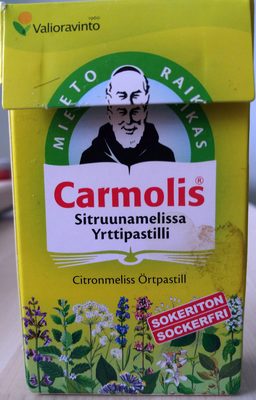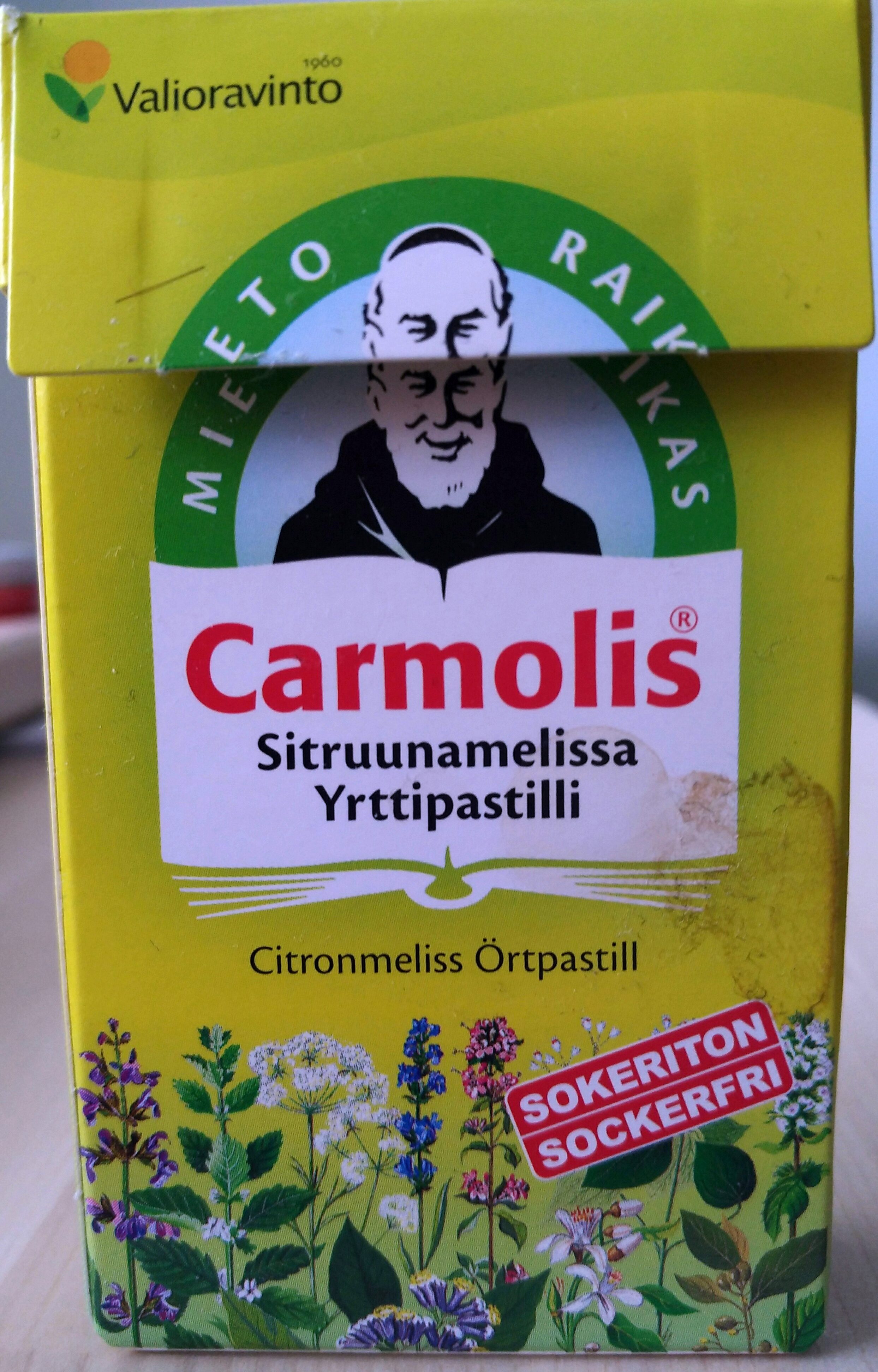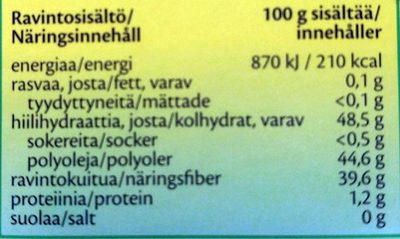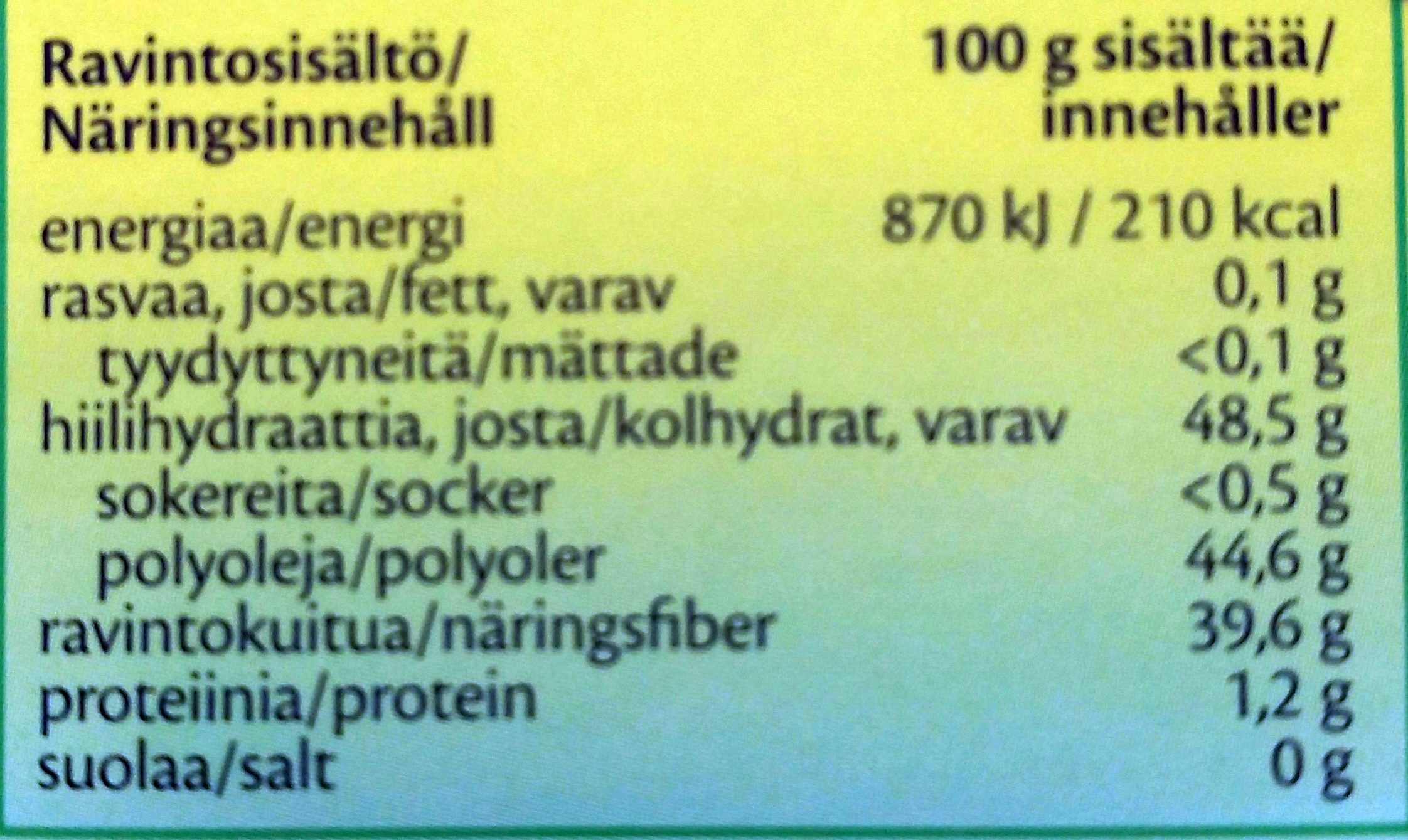Carmolis Sitruunamelissa Yrttipastilli - Valioravinto - 45 g
This product page is not complete. You can help to complete it by editing it and adding more data from the photos we have, or by taking more photos using the app for Android or iPhone/iPad. Thank you!
×
Barcode: 9021600168809 (EAN / EAN-13)
Common name: Sugarfree lemon balm and herb drops
Quantity: 45 g
Brands: Valioravinto
Categories: Snacks, Sweet snacks, Cocoa and its products, Confectioneries, Chocolate candies, Bonbons
Labels, certifications, awards: With sweeteners, fi:Sugarfree
Manufacturing or processing places: Austria
Link to the product page on the official site of the producer: http://valioravinto.fi/carmolis-sitruuna...
Countries where sold: Finland









